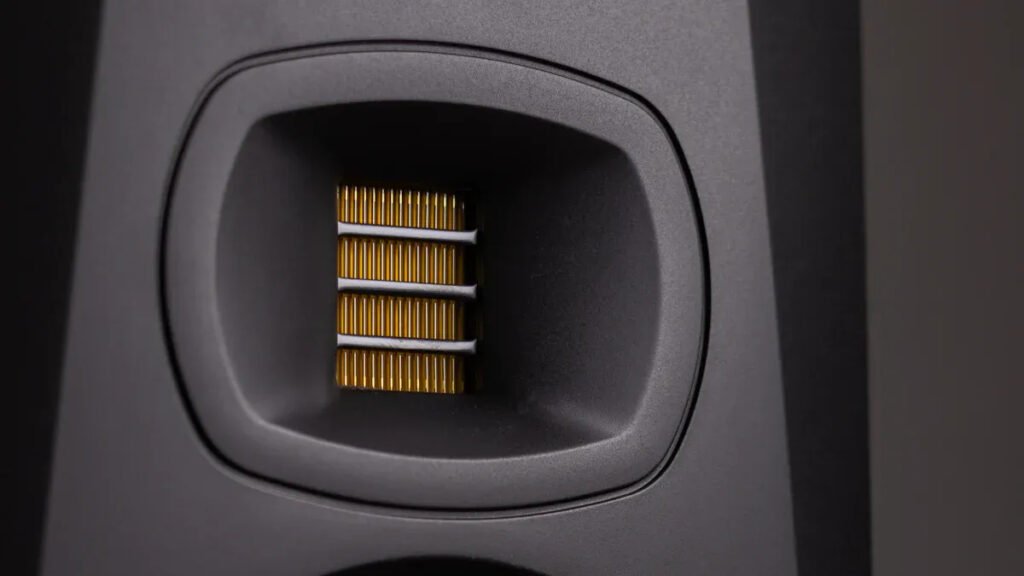Table of Contents

I have always noticed that speakers using alnico magnet produce sound that feels warmer and richer to my ears. Alnico, a blend of aluminum, nickel, and cobalt, creates a strong and stable magnetic field inside the speaker. This unique property shapes the sound in a way that many listeners describe as vintage and full. According to Ragnar Lian, co-founder of Scan-Speak, these speakers show 10 times less distortion than those with ferrite magnets, which means clearer and more natural music. I also appreciate the natural compression and dynamic response that make every note stand out.
Key Takeaways
Speakers using alnico magnets produce warm, rich, and natural sound with smooth highs and lively dynamics.
Alnico magnets offer natural compression that controls volume smoothly, making music feel more expressive and less harsh.
Compared to ceramic and neodymium magnets, alnico magnets provide better tonal warmth and stability at high temperatures.
Musicians and audiophiles prefer alnico speakers for their vintage character, dynamic response, and musicality.
Though alnico magnets cost more and weigh more, their unique sound quality and durability make them worth the investment.
Speakers using alnico magnet

What Is Alnico?
When I first learned about alnico, I discovered that it stands for aluminum, nickel, and cobalt. These three metals combine to form a powerful magnet that has shaped the sound of many classic speakers. Alnico magnets have been around since the 1930s. I often see them in vintage guitar amps and high-end audio equipment. The unique blend of metals gives alnico its strength and stability. Unlike other magnets, alnico can handle high temperatures without losing its magnetic power. This makes it ideal for use in speakers that require high performance under stress.
I find it fascinating that modern manufacturing methods, such as powder bed fusion and electron beam melting, enable engineers to precisely control the composition and structure of Alnico. By adjusting the amounts of titanium and nickel and using special heat treatments, they can fine-tune the magnet’s properties. This careful process helps create the warm, rich sound that I love in speakers using alnico magnet.
Magnetic Properties
Alnico magnets stand out because of their special magnetic properties. I notice that they produce a strong and stable magnetic field, which is key for clear and natural sound. Scientists use advanced tools like transmission electron microscopy to study the tiny structures inside alnico. They find that the magnet separates into two main phases: one rich in iron and cobalt, and another with more nickel and aluminum. This separation, along with special heat treatments, boosts the magnet’s strength and stability.
Performance benchmarks for alnico include intrinsic coercivity, remanence, and maximum energy product. These terms measure how well the magnet holds its power and how much energy it can deliver. I appreciate that alnico magnets also keep their strength even when temperatures rise, which means the sound stays consistent during long listening sessions. While new manufacturing methods help reduce flaws like pores and cracks, engineers still work to make alnico even better for audio use.
Speakers Using Alnico Magnet vs. Other Types

Alnico vs. Ceramic Magnets
When I compare alnico and ceramic magnets in speakers, I notice big differences in sound and performance. Alnico magnets give me a warm, smooth tone that feels natural. I often hear this in vintage guitar amps and classic hi-fi speakers. Ceramic magnets, made from iron oxide and strontium carbonate, sound brighter and sometimes harsher to my ears. They became popular in the 1970s because they cost less and resist demagnetization better than alnico.
I find that ceramic magnets make speakers louder and more efficient. They work well for modern music styles that need punch and clarity. However, I miss the gentle compression and dynamic response that speakers using alnico magnet provide. Alnico magnets also handle high temperatures better, so the sound stays stable during long sessions. Ceramic magnets weigh less and cost less, but they do not deliver the same vintage character.
Tip: If you want a classic, musical sound, choose alnico. If you need a budget-friendly speaker with strong output, ceramic might suit you better.
Alnico vs. Neodymium Magnets
When I look at neodymium magnets, I see a different set of strengths. Neodymium magnets have much higher magnetic strength than alnico. Scientists measure this using the magnetic energy product (BH)max, which shows how much energy a magnet can store. Neodymium magnets range from 35 to 53 MGOe, while alnico magnets have lower values but better temperature resistance. This means neodymium magnets can make speakers smaller and lighter without losing power.
Here is a table that helps me compare the two:
Material | Magnetic Density | Weight | Cost | Applications |
|---|---|---|---|---|
Neodymium | High | Light | Expensive | High-end and compact designs |
Alnico | Low to Moderate | Medium | Expensive | Vintage and specialty designs |
Neodymium magnets work best in portable speakers and headphones. They offer high efficiency and strong bass in a small package. I notice that speakers using alnico magnet are heavier and larger, but they give me a unique tonal warmth that neodymium cannot match. Alnico also resists high temperatures, so it stays stable even when I play music for hours.
Magnetic strength affects how well the voice coil moves and how much power the speaker can handle.
Stronger magnets, like neodymium, control the speaker cone better, which improves sound quality and volume.
Neodymium magnets fit best in modern, compact audio gear.
Alnico magnets shine in vintage and specialty speakers, giving a sound that many musicians and audiophiles love.
Sound and Tone Differences
I always listen for the differences in sound and tone between these magnet types. Speakers using alnico magnet give me a warm, rich sound with smooth highs and soft compression. This makes them perfect for blues, jazz, and classic rock. I feel the music breathes and responds to my playing or listening style. The dynamic response is lively, and the sound never feels harsh.
Ceramic magnets sound brighter and more aggressive. They work well for modern music that needs a sharp attack and clear highs. I sometimes find the sound less musical and more sterile, especially at high volumes.
Neodymium magnets deliver powerful sound in a small size. They give me strong bass and clear mids, but the tone can feel less organic. I notice that neodymium speakers focus on efficiency and portability, not on vintage warmth.
Note: Each magnet type has pros and cons. Alnico offers warmth and musicality, but costs more and weighs more. Ceramic is affordable and durable, but lacks a vintage tone. Neodymium is light and strong, but it can sound less natural.
Benefits of Alnico Magnets
Warmth and Richness
When I listen to speakers using alnico magnet, I notice a warmth and richness that stands out. The sound feels full and alive, with a complex midrange and clear highs. This comes from the unique mix of metals in alnico, which includes iron, nickel, aluminum, cobalt, copper, and titanium. The low inductance of alnico magnets lets the voice coil move freely, adding bite and harmonic detail to the sound. I often hear a growly low end and crisp highs that make music feel more real.
A scientific comparison of magnet types shows that alnico magnets add midrange complexity and harmonic richness. Steel and ferrite magnets do not shape the sound in the same way. Spectral analysis and listening tests confirm that alnico magnets give speakers a unique tonal character. I find that no other magnet type can match this level of warmth and presence.
Magnet Type | Tonal Characteristics & Sound Contribution |
|---|---|
Alnico | Midrange bite, complex harmonics, warmth, richness, crisp highs, growly lows |
Steel | Smooth highs, less grit, lacks warmth |
Ferrite | Brittle, toneless, no warmth |
Samarium Cobalt | No direct tonal influence, cannot replicate alnico qualities |
Note: If you want a speaker that brings out the soul of your music, alnico magnets deliver a sound that feels both vintage and vibrant.
Natural Compression
One of my favorite features of alnico magnets is their natural compression. When I turn up the volume, I hear the sound compress smoothly, much like a tube amplifier. This happens because the magnetic field in alnico can be partially demagnetized by the voice coil during loud passages. The magnet’s domains flip near the surface, which gently reduces efficiency and voice coil movement. The result is a soft, musical compression that never feels harsh or abrupt.
This effect is not permanent. The magnet returns to full strength when the signal drops. I love how this compression adds character to the sound, especially at high volumes. It makes every note feel controlled and expressive. Many classic speakers and guitar amps use alnico magnets for this reason. The compression effect helps shape the legendary tones of blues, jazz, and rock music.
Dynamic Response
I always look for speakers who respond to my playing or listening style. Alnico magnets give me a lively, dynamic response. When I play softly, the sound stays clear and detailed. When I play hard, the speaker compresses naturally, keeping the tone smooth and musical. This happens because alnico magnets interact with the voice coil’s magnetic field. At higher input signals, the magnet’s strength drops slightly, which limits cone movement and creates a gentle compression.
Alnico magnets are more easily demagnetized by the voice coil at high volumes.
This reduces magnetism and efficiency, leading to less cone movement.
The result is a smooth, tube-like compression effect.
Ceramic magnets resist this effect, so they sound more aggressive and edgy at high volumes.
The dynamic response of alnico magnets makes music feel more alive and expressive.
I find that this dynamic behavior is one of the main reasons musicians and audiophiles prefer speakers using alnico magnet. The sound breathes and reacts to every nuance, making each listening session unique.
Stability and Durability
Alnico magnets offer impressive stability and durability. They can handle high temperatures without losing their magnetic power. I have used speakers with alnico magnets for long sessions, and the sound stays consistent. The metallic structure of alnico makes it less prone to cracking compared to some other magnet types. This means the speaker can last for many years if handled with care.
However, I must mention some trade-offs. Alnico magnets cost more to produce and are heavier than ceramic or neodymium magnets. They can also be demagnetized if exposed to strong external magnetic fields or physical shock. Over time, this can reduce their strength, but with proper care, they remain reliable for decades.
Tip: If you value vintage tone, warmth, and musicality, the benefits of alnico magnets often outweigh the higher cost and weight.
Real-World Appeal
Musicians’ Choice
I often talk with musicians who care deeply about their sound. Many of them choose speakers with alnico magnets for their unique tone. When I play guitar through an amp with an alnico speaker, I hear a smooth, warm sound that feels alive. The notes seem to blend in a musical way. This quality helps me express emotion in my playing.
Most classic amps from the 1950s and 1960s used alnico speakers. Famous guitarists like Eric Clapton and Brian May have relied on these speakers for their signature sounds. I notice that when I push the volume, the natural compression from the alnico magnet keeps the tone smooth and controlled. This makes it easier for me to play with feeling, even at high volumes.
Here are some reasons musicians like me prefer alnico speakers:
Warm, vintage tone that stands out in a mix
Smooth compression that feels musical
A dynamic response that reacts to playing style
Tip: If you want your instrument to sound classic and expressive, try a speaker with an alnico magnet.
Audiophile Preference
I also meet many audiophiles who seek the best listening experience. They often choose speakers with alnico magnets because of the natural, detailed sound. When I listen to music on these speakers, I hear every detail in the recording. The sound feels rich and full, not harsh or artificial.
Audiophiles value the way alnico magnets bring out the character of each instrument. The midrange sounds clear, and the highs stay smooth. I find that these speakers make long listening sessions enjoyable because the sound never gets tiring.
Feature | Alnico Magnet Speakers | Other Magnet Speakers |
|---|---|---|
Tonal Warmth | ⭐⭐⭐⭐⭐ | ⭐⭐ |
Natural Compression | ⭐⭐⭐⭐⭐ | ⭐ |
Listening Fatigue | Low | Medium/High |
Note: If you love music and want to hear it as the artist intended, alnico magnet speakers offer a listening experience that feels both natural and inspiring.
After years of listening, I believe speakers using alnico magnet deliver unmatched warmth, musicality, and dynamic response. I hear every detail and feel the music come alive. Musicians and audiophiles like me benefit from the natural compression and vintage tone. If you want a classic sound or crave expressive playback, I recommend choosing speakers using alnico magnet for your next upgrade.
Customize your speakers using alnico magnet
CORT MAGNETS is are magnetic material manufacturer. Want to know more or obtain free samples of speakers using alnico magnet?
FAQ
What makes alnico magnets sound different from other magnets?
I hear a warmer, richer tone from alnico magnets. The unique mix of metals shapes the magnetic field. This gives music a vintage feel. I notice smoother highs and more natural compression compared to ceramic or neodymium magnets.
Are Alnico magnet speakers worth the higher price?
I believe they are worth it if you value sound quality. The warmth, dynamic response, and vintage tone stand out. I pay more, but I get a unique listening experience that cheaper magnets cannot match.
Can alnico magnets lose their strength over time?
Yes, alnico magnets can lose strength if exposed to strong magnetic fields or physical shock. I keep my speakers safe and avoid dropping them. With proper care, I find that alnico magnets last for decades.
Do alnico speakers work well for all music styles?
I enjoy Alnico speakers most with blues, jazz, and classic rock. The warmth and smooth compression fit these styles. For modern, aggressive music, I sometimes prefer ceramic or neodymium speakers for their brighter sound.


